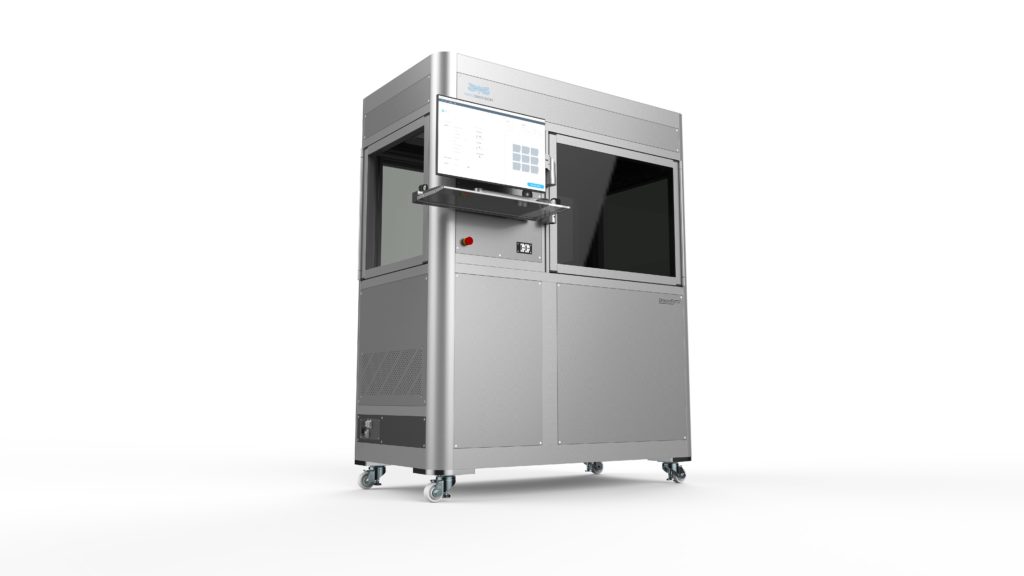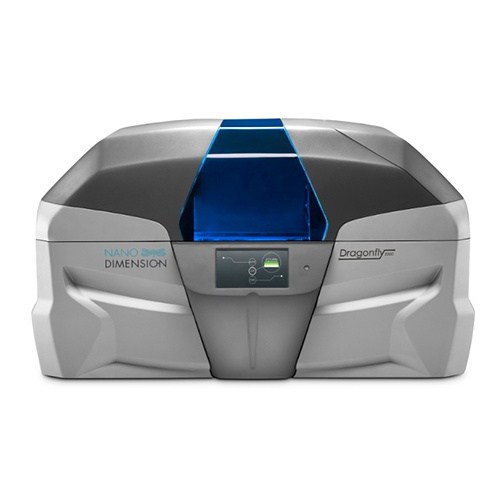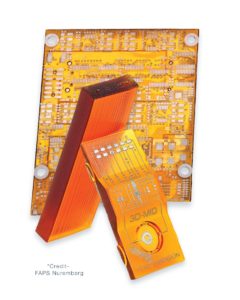 3D Printed Electronics is one of those sectors of the 3D printing industry where opportunities are still to be seized. There are few players for an existing demand. Furthermore, the target audience still needs to be aware of the benefits for its production.
3D Printed Electronics is one of those sectors of the 3D printing industry where opportunities are still to be seized. There are few players for an existing demand. Furthermore, the target audience still needs to be aware of the benefits for its production.
Nano Dimension, leader in 3D printed electronics, targets this demand while reshaping the future of how electronics are made.
With a diverse experience in a wide range of industries including 3D printing, especially 3D printed electronics, Robert Even is an engineer by training.
As Materials and Sales Manager at Nano Dimension, he reveals today a few secrets of this sector of activity and how Nano Dimension takes advantage of it by launching its flagship product: The 3D printer DragonFly 2020 Pro
Tell us more about Nano Dimension’s flagship product
The DragonFly 2020 is a desktop printer. After receiving feedbacks from 60 customers worldwide, we made a lot of improvements and implemented all those changes in our new product. We are now launching the industrial version, the DragonFly 2020 Pro, which is much heavier and robust than the DragonFly 2020


What are the main differences professionals should know about the DragonFly 2020 Pro and the DragonFly 2020?
The physical difference is that the DragonFly 2020 Pro is bigger, more mechanically precise printer and much easier to service.
It’s also bigger in general and more robust which is easy to maintain during movements.
The mechanical difference translates into better features when we print on PCB.
These mechanical properties include smaller features, more precise, small spacing which is also an important aspect for the use.
What next for the DragonFly 2020 Pro?
We are now setting out a distribution network and we need to sub-contract our services to third parties. We will start working with distributors who are going to ensure the good functioning of our printers. So, we need to have a very easy-to-service machine.
Are the targets the same for both products?
Yes, the target is the same since we are offering the same benefits for both printers. It’s just an evolution of our model from a desktop to an industrial machine.
As for benefits, they include a significant time-saving in design, making complexity free…It’s free to use very complex design, it opens up different directions to designers who can innovate much more and try new ideas.
So, all those benefits are the same for the two, but only one 3D printer is more suitable for mass commercialization, the DragonFly 2020 Pro.
What type of companies can use the DragonFly 2020 Pro?
There is a lot worldwide variety of companies… Every single industry that uses electronics today. Companies in the military and defense industry for instance; those who work in this sector want to keep their designs secret.
There are also professionals in medical electronics who create new designs too, very small PCBs (a new concept). Industrials such as Caterpillar, can come to us as well.
Any company which is launching a new product and which is interested in cutting time significantly for each of its design cycle with the DragonFly 2020 Pro.
What are the main challenges of 3D printed electronics?
In general, to do 3D printed electronics, there are only very few limited solutions that are being implemented today and most of them are doing surface printed electronics or simple desktop electronics (as other alternative).
At Nano Dimension, we can build up the entire 3D printed object or embed conductors. Our solution goes beyond the existing solution which remains on the surface.
The true challenge is to make it actually happen. And we believe that we are actually making it happen as a higher resolution, multilayer; opening up new possibilities for the 3D printed electronics and making it a true field.
How does 3D printed electronics evolve, shape or redefine the way electronics are made?

Regarding its evolution, the big news is being able to dramatically cut the time to develop new products. Our solution can enable users to do until four design cycles in a day, instead of a week…so for 200 designs per year for instance, they can save 6 days on 60% of their design cycle. We are talking about a massive time-saving to bring a product to the market. That’s one of the best benefits we can provide.
Because complexity is free in the design, there is for example a feature called “VR” which is quite complicated on traditional PCB manufacturing to do. The PCB is a very problematic area but with our printer, the designer can leverage this and get so much more. It is possible to design quicker, better and easier for the user.
3D printed electronics is then a mature market?
No, not at all. 3D printing is mature but 3D Printed electronics is at its very early stage. We were for instance only two companies of this industry at the TCT Show.
There is a big need, but there are not many players.
What are the main difficulties Nano Dimension encounters on the market?
In order to get customers on board and for them to buy the products, they need to understand that the material is different, we bring a lot of benefits, but it is not the exact same material.
Sometimes, that’s tough for customers to accept or to understand. We need to explain them that they get a whole basket of benefits in exchange of using another material. They would like instead a fast solution with the exact same material but it does not work like that.
Could we expect any new product to be manufactured this year?
In a long term, yes. The 2020 Pro is our flagship product. Over the years, we will be launching other 3D Printers.
A new product in the 3D printed electronics includes a new material. A new material can open up applications in another area. So, I am sure there will be more materials, thus more products. We have already announced some projects with new materials we are working on: ceramics, flexible materials…all of these will be in our pipeline…#Staytuned
Any last word?
At the last two shows we participated in the UK (TCT Show), and in France (Nova Show), we brought our distributor on board. We have very interesting leads who came to buy and understand what this technology can do and it’s very exciting for us to already hear their feedback and their excitement about this full-solution for the 3D printed electronics market.
For further information about 3D Printing, follow us on our social networks and subscribe to our newsletter!
//pagead2.googlesyndication.com/pagead/js/adsbygoogle.js
(adsbygoogle = window.adsbygoogle || []).push({});






